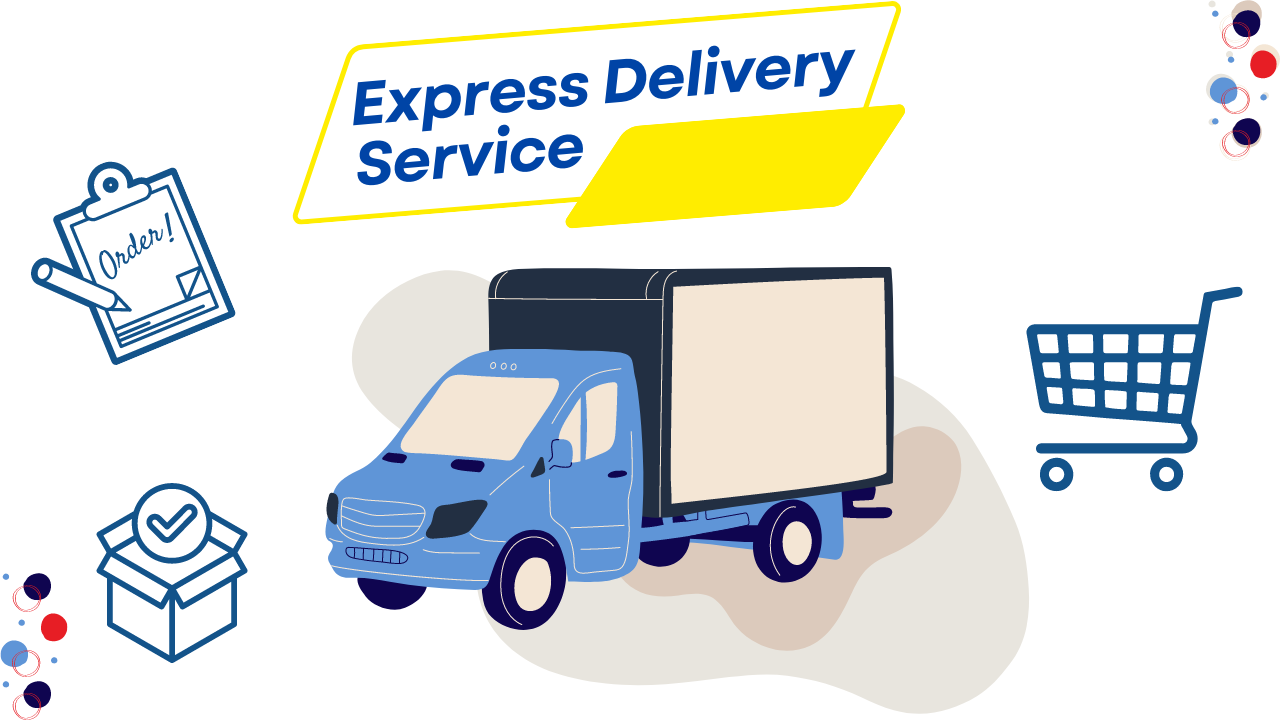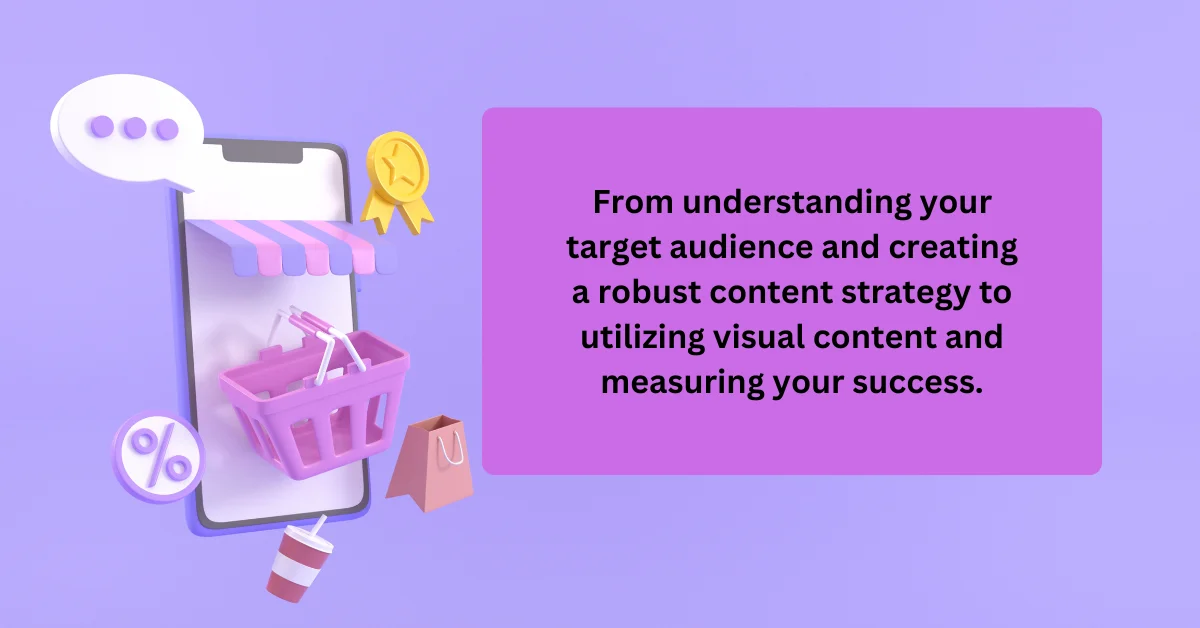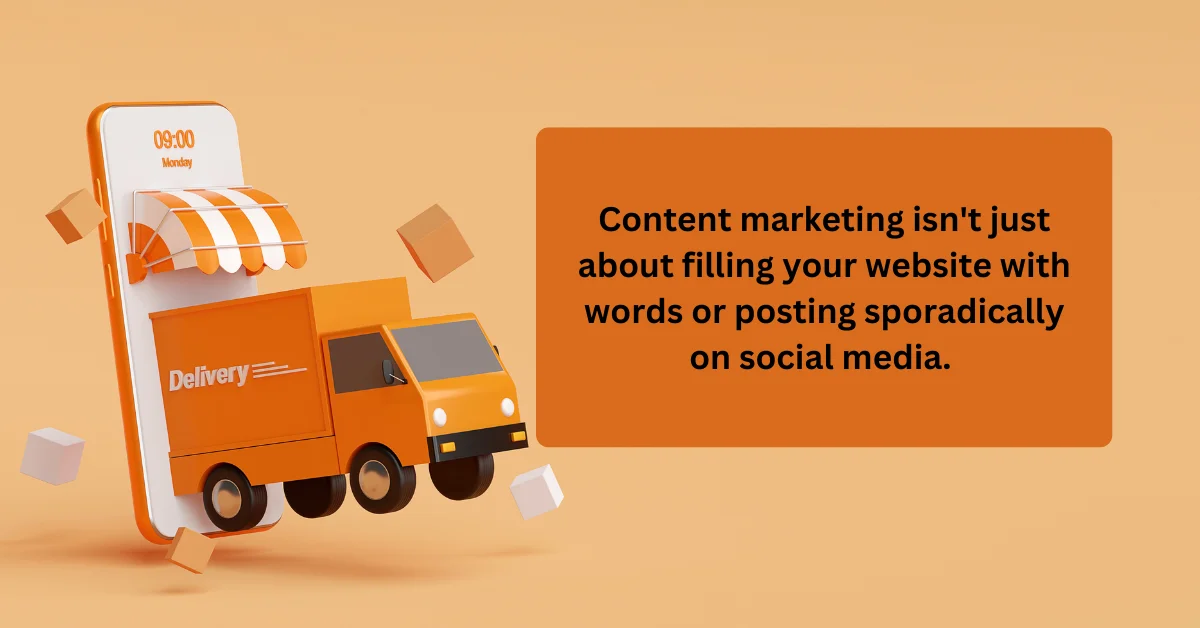In the ever-evolving world of e-commerce, fulfillment and logistics are the backbone of any successful online store. These operations directly impact the speed, accuracy, and reliability of delivering products to customers, which can make or break the customer experience. Efficient fulfillment and logistics not only ensure timely deliveries but also help reduce costs, manage inventory effectively, and maintain high levels of customer satisfaction.
As the e-commerce landscape becomes more competitive, businesses need to find ways to streamline their operations to stay ahead. Whether you are a small online retailer or a large e-commerce platform, optimizing fulfillment and logistics is crucial to your growth and sustainability. This guide will walk you through the essential components of a successful fulfillment strategy, explore the latest technological solutions, and provide actionable tips to enhance your logistics management. By the end of this article, you’ll have a clear understanding of how to optimize your e-commerce operations for better efficiency and improved customer satisfaction.
Understanding E-commerce Fulfillment and Logistics
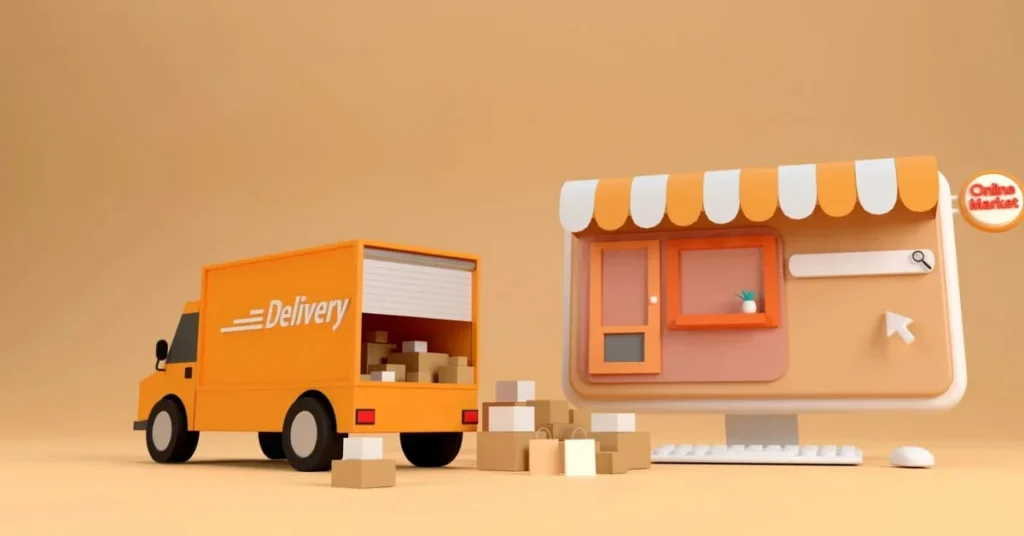
Efficient e-commerce fulfillment and logistics are the cornerstones of a successful online business. Understanding these two interconnected components is vital for any e-commerce operation aiming to provide excellent customer service and drive growth.
E-commerce Fulfillment: In simple terms, fulfillment refers to the process of receiving, processing, and delivering orders to customers. This involves several steps, starting from inventory storage and management to picking and packing the items and finally shipping them to the customer’s doorstep. Effective fulfillment ensures that the right products are delivered to the right customers, at the right time, and in the best condition.
In the e-commerce context, fulfillment goes beyond just the physical handling of goods. It encompasses everything from accurate inventory management to order processing, packaging, shipping, and even handling returns. The goal of a robust fulfillment process is to minimize errors, reduce costs, and ensure that customers are delighted with their purchase experience.
E-commerce Logistics: Logistics, on the other hand, is the broader framework that supports the fulfillment process. It involves the planning, implementation, and coordination of all the resources and activities needed to move goods from the point of origin to the point of consumption. In e-commerce, logistics covers everything from managing suppliers and warehouses to shipping and last-mile delivery.
The role of logistics in e-commerce is to ensure that the entire supply chain is optimized for efficiency and cost-effectiveness. This includes selecting the right shipping partners, managing inventory levels, optimizing warehouse locations, and ensuring timely delivery of products to customers. By effectively managing logistics, e-commerce businesses can streamline their operations, reduce costs, and enhance customer satisfaction.
To succeed in e-commerce, it’s crucial to understand how fulfillment and logistics work together to support your business. While fulfillment focuses on the steps taken to complete customer orders, logistics ensures that these steps are carried out smoothly and efficiently. By mastering both, you can create a seamless shopping experience for your customers, build a loyal customer base, and drive long-term success for your online store.
Key Components of an Efficient E-commerce Fulfillment Strategy
To streamline e-commerce fulfillment and logistics, it’s essential to have a well-rounded strategy that covers all the critical components of the fulfillment process. Each component plays a vital role in ensuring that products are delivered to customers promptly and cost-effectively. Here’s a closer look at the key elements of an efficient e-commerce fulfillment strategy:
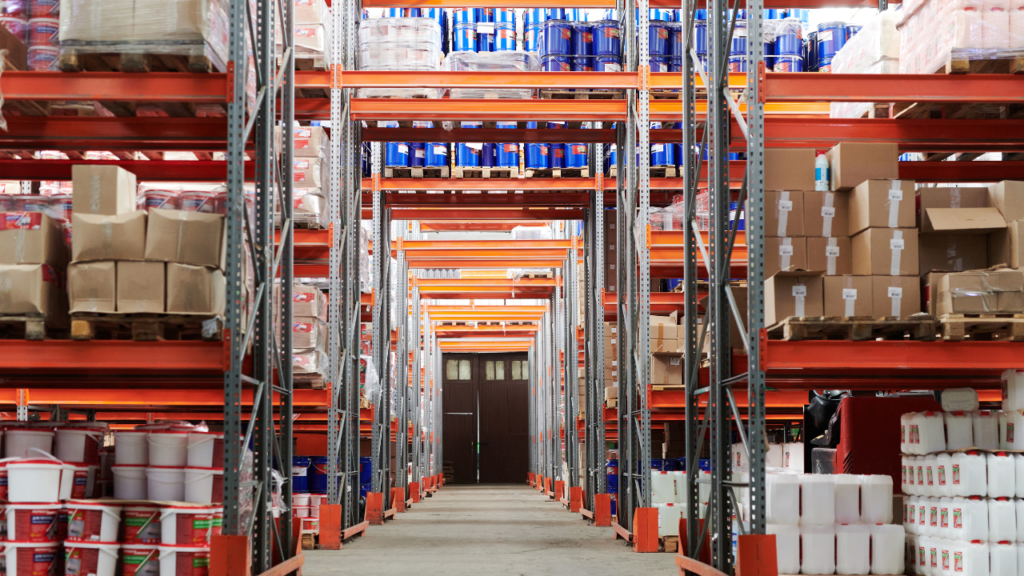
1. Inventory Management
Effective inventory management is the backbone of any successful e-commerce fulfillment strategy. It involves keeping track of stock levels, understanding product demand, and ensuring that popular items are always in stock. Poor inventory management can lead to stockouts or overstocking, both of which can negatively impact your bottom line.
To manage inventory efficiently, consider implementing inventory management systems (IMS) that automate stock tracking and provide real-time updates. These systems help predict demand, prevent over-ordering, and optimize inventory levels, ensuring that you have the right products in the right quantities at all times.
2. Warehousing
Warehousing is another critical component of e-commerce fulfillment. It involves storing products safely and efficiently, ready for picking and packing when orders are placed. The choice of warehouse location and layout can significantly impact fulfillment speed and costs.
Opt for strategically located warehouses that are closer to your major customer bases to reduce shipping times and costs. Additionally, consider using warehouse management systems (WMS) to streamline storage, improve inventory accuracy, and optimize the picking and packing process. A well-organized warehouse can significantly reduce the time and effort required to fulfill orders, leading to faster deliveries and happier customers.
3. Order Processing
Streamlining order processing is crucial for efficient fulfillment. This involves automating as much of the process as possible, from receiving orders to picking, packing, and shipping them out. The faster and more accurately you can process orders, the sooner your customers receive their products.
Investing in order management systems (OMS) can help automate order processing tasks, reduce human error, and improve order accuracy. These systems can integrate with your e-commerce platform, providing real-time updates on order status and inventory levels. By optimizing your order processing workflow, you can ensure faster fulfillment and improved customer satisfaction.
4. Shipping and Delivery
Shipping and delivery are the final steps in the e-commerce fulfillment process. Choosing the right shipping partners and methods is crucial for balancing speed and cost. Customers expect fast and affordable shipping options, and meeting these expectations is key to maintaining customer loyalty and satisfaction.
Evaluate different shipping carriers and methods to find the best options for your business. Consider factors such as delivery speed, cost, reliability, and tracking capabilities. You may also want to offer multiple shipping options to cater to different customer needs. Using shipping software can help automate label printing, compare carrier rates, and provide real-time tracking updates to customers.
By focusing on these key components, you can create a fulfillment strategy that is efficient, cost-effective, and capable of meeting the demands of your customers.
Technology Solutions for E-commerce Fulfillment and Logistics
In today’s fast-paced e-commerce environment, technology plays a pivotal role in streamlining fulfillment and logistics. Leveraging the right technology solutions can significantly enhance operational efficiency, reduce costs, and improve customer satisfaction. Here are some key technological tools that can help optimize your e-commerce fulfillment and logistics:
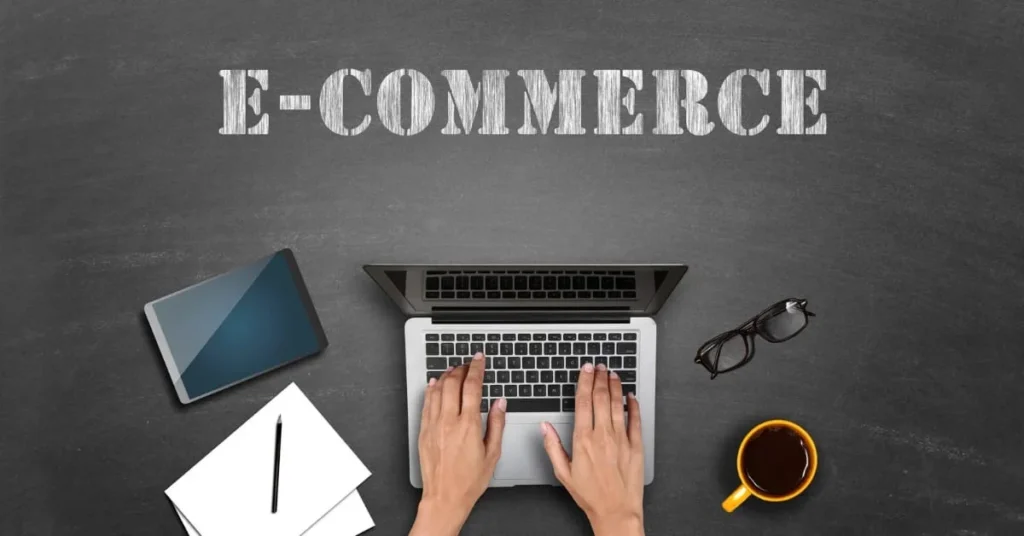
1. Inventory Management Systems (IMS)
An effective Inventory Management System (IMS) is crucial for maintaining accurate stock levels and forecasting demand. IMS software helps track inventory across multiple channels and locations, providing real-time visibility into stock levels and movements. This ensures that you always have the right products in stock and reduces the risk of overselling or stockouts.
IMS solutions can also help automate reorder points, generate purchase orders, and provide insights into sales trends. By optimizing inventory levels, you can minimize carrying costs and improve cash flow, ensuring that your e-commerce business runs smoothly.
2. Warehouse Management Systems (WMS)
Warehouse Management Systems (WMS) are designed to optimize warehouse operations, from receiving and storage to picking, packing, and shipping. A WMS can help improve warehouse layout and organization, streamline workflows, and reduce errors in order fulfillment.
By automating warehouse processes, a WMS can significantly reduce the time it takes to fulfill orders and improve accuracy. This leads to faster delivery times and fewer shipping errors, enhancing the overall customer experience. Additionally, a WMS can integrate with other systems, such as IMS and OMS, to provide a comprehensive view of your entire supply chain.
3. Order Management Systems (OMS)
Order Management Systems (OMS) are essential for streamlining the order fulfillment process. An OMS centralizes order information from various sales channels, allowing you to manage orders from a single platform. This reduces the complexity of handling orders from multiple sources and ensures that all orders are processed efficiently and accurately.
An OMS can automate key tasks such as order routing, inventory updates, and customer notifications. It can also provide real-time insights into order status, helping you manage customer expectations and improve service levels. By optimizing order processing, an OMS helps reduce fulfillment times and improve customer satisfaction.
4. Shipping Software
Shipping software is a valuable tool for managing the shipping and delivery process. It allows you to compare carrier rates, print shipping labels, and track shipments from a single platform. This not only saves time but also helps you find the most cost-effective shipping options for your business.
Shipping software can also automate the generation of shipping labels, customs documentation, and return labels, reducing manual work and the risk of errors. Additionally, it can provide real-time tracking information to customers, enhancing transparency and building trust. By optimizing your shipping processes, you can reduce costs and improve delivery speed, leading to a better customer experience.
By integrating these technology solutions into your e-commerce operations, you can streamline fulfillment and logistics, reduce costs, and improve customer satisfaction. Investing in the right technology is key to staying competitive in the fast-paced world of e-commerce.
Best Practices for Streamlining E-commerce Logistics
Streamlining e-commerce logistics is essential for maintaining a competitive edge in the online marketplace. Efficient logistics management not only reduces operational costs but also enhances customer satisfaction by ensuring timely and accurate deliveries. Here are some best practices for optimizing your e-commerce logistics:
1. Optimizing Supply Chain Management
Effective supply chain management is the foundation of streamlined logistics. This involves coordinating all activities involved in sourcing, procurement, conversion, and logistics management. Building strong relationships with suppliers and logistics providers is crucial for ensuring a reliable supply of products and minimizing disruptions.
To optimize supply chain management, consider implementing a collaborative approach with your suppliers. This could involve sharing demand forecasts, coordinating production schedules, and maintaining open lines of communication. By fostering strong partnerships, you can improve inventory management, reduce lead times, and enhance overall supply chain efficiency.
2. Implementing Real-Time Tracking
Real-time tracking of inventory and shipments is essential for maintaining visibility and control over your logistics operations. By knowing exactly where your inventory is at all times, you can make informed decisions about restocking, order fulfillment, and customer communication.
Invest in technologies such as RFID (Radio-Frequency Identification) and IoT (Internet of Things) devices to enable real-time tracking of products throughout the supply chain. This allows you to monitor inventory levels, track shipments, and receive alerts about potential issues, such as delays or stockouts. Real-time tracking helps ensure that you can respond quickly to changes in demand and keep customers informed about the status of their orders.
3. Utilizing Data and Analytics
Data and analytics are powerful tools for optimizing e-commerce logistics. By analyzing data from various sources, such as sales, inventory, and shipping, you can gain valuable insights into your logistics performance and identify areas for improvement.
Use analytics to track key performance indicators (KPIs) such as order accuracy, delivery times, and shipping costs. This data can help you identify trends, forecast demand, and optimize your logistics processes. For example, by analyzing shipping data, you may discover opportunities to consolidate shipments, negotiate better rates with carriers, or adjust delivery routes to reduce costs and improve delivery times.
4. Outsourcing vs. In-House Fulfillment
Deciding whether to outsource your fulfillment operations or manage them in-house is a critical decision that can significantly impact your logistics strategy. Outsourcing fulfillment to a third-party logistics provider (3PL) can offer several benefits, such as access to advanced technology, expertise, and scalability. This can be particularly advantageous for small to mid-sized e-commerce businesses that may not have the resources to invest in their own logistics infrastructure.
However, managing fulfillment in-house can provide greater control over the entire process and allow for more customization and flexibility. When deciding between outsourcing and in-house fulfillment, consider factors such as your business size, order volume, budget, and specific logistical needs. Each option has its pros and cons, so it’s important to choose the one that aligns with your business goals and resources.
By implementing these best practices, you can streamline your e-commerce logistics, reduce costs, and enhance customer satisfaction. A well-optimized logistics strategy is key to staying competitive in the e-commerce landscape and driving long-term growth for your online store.
Cost-Effective Shipping Strategies
Shipping is a critical component of e-commerce logistics that directly affects your bottom line and customer satisfaction. Developing cost-effective shipping strategies is essential for balancing the need for speed with the realities of shipping costs. Here are some strategies to optimize shipping while keeping costs under control:

1. Understanding Shipping Zones and Rates
Shipping zones are geographic areas that determine shipping rates based on the distance between the origin and the destination. Carriers like UPS, FedEx, and USPS use these zones to calculate shipping costs. Understanding how these zones work is crucial for optimizing your shipping strategy.
To minimize costs, analyze your customer base and identify where the majority of your orders are shipped. By understanding your shipping zones, you can optimize your warehouse locations and choose carriers that offer the best rates for those specific areas. This strategic approach can significantly reduce shipping costs and improve delivery times.
2. Utilizing Bulk Shipping Discounts
Many carriers offer discounts for businesses that ship large volumes of packages. If your e-commerce store processes a high number of orders, take advantage of bulk shipping discounts. These discounts can significantly reduce per-package costs, making it more affordable to ship products to your customers.
To qualify for bulk shipping discounts, consider consolidating orders when possible or negotiating directly with carriers for better rates. You can also explore third-party shipping platforms that offer discounted rates through their partnerships with various carriers.
3. Offering Multiple Shipping Options
Offering multiple shipping options can help you cater to different customer needs while managing shipping costs effectively. For example, some customers may prioritize cost over speed and prefer a standard shipping option, while others may be willing to pay extra for expedited shipping.
By providing a range of shipping options, you can give customers the flexibility to choose the option that best suits their needs and budget. This also allows you to optimize shipping costs by using different carriers or services based on the customer’s selection.
4. Free Shipping Considerations
Free shipping is a powerful marketing tool that can drive sales and increase conversion rates. However, offering free shipping can also eat into your profit margins if not managed carefully. To offer free shipping without sacrificing profitability, consider implementing the following strategies:
- Minimum Order Thresholds: Set a minimum order value that customers must reach to qualify for free shipping. This encourages customers to spend more, helping offset the cost of shipping.
- Selective Free Shipping: Offer free shipping on select items or categories that have higher profit margins or are easier to ship. This allows you to attract customers without significantly impacting your bottom line.
- Membership Programs: Create a membership program that offers free shipping as one of its benefits. This can encourage customer loyalty and increase repeat purchases while spreading the cost of shipping across multiple orders.
By carefully considering these factors, you can implement a cost-effective shipping strategy that balances customer satisfaction with profitability. Optimizing your shipping processes can help reduce costs, improve delivery times, and enhance the overall customer experience.
Enhancing Customer Experience through Effective Fulfillment and Logistics
Delivering a superior customer experience is crucial for the success of any e-commerce business. Effective fulfillment and logistics play a significant role in shaping this experience by ensuring that customers receive their orders accurately and promptly. Here are several strategies to enhance customer satisfaction through optimized fulfillment and logistics:

1. Accurate and Transparent Communication
Clear and transparent communication is key to building trust with your customers. Keeping customers informed about their order status at every stage of the fulfillment process can significantly enhance their experience.
Order Confirmation and Updates: Send automated emails or text messages to confirm order receipt, provide expected delivery dates, and notify customers of any delays. Providing real-time tracking information allows customers to monitor their orders and anticipate delivery, reducing anxiety and improving satisfaction.
Proactive Issue Resolution: If there are any issues with an order, such as delays or out-of-stock items, communicate proactively with your customers. Offering solutions like partial shipments, backorders, or refunds can turn a potentially negative experience into a positive one by showing that you value their satisfaction.
2. Returns Management
Returns are an inevitable part of e-commerce, and how you handle them can significantly impact customer loyalty. A hassle-free return process can enhance customer trust and encourage repeat purchases.
Clear Return Policies: Clearly communicate your return policy on your website and at the point of purchase. Make sure it is easy to understand and outlines the steps customers need to take to return an item. Offering free returns can also be a powerful incentive for customers to shop with confidence.
Efficient Processing: Streamline your returns process to ensure quick and efficient handling of returned items. Automating returns with software solutions can help you track returns, manage inventory, and issue refunds promptly. By processing returns efficiently, you can reduce the time it takes for customers to receive refunds or replacements, enhancing their overall experience.
3. Customer Support
Exceptional customer support is essential for resolving any issues that may arise during the fulfillment and logistics process. Providing multiple channels for customer support, such as phone, email, and live chat, ensures that customers can easily reach you when they need assistance.
Responsive Support Team: Train your customer support team to handle fulfillment-related inquiries quickly and effectively. Providing your team with the tools and information they need to resolve issues on the first contact can significantly improve customer satisfaction.
Personalized Assistance: Use customer data to personalize interactions and offer tailored solutions. For example, if a customer frequently experiences delayed deliveries, offering a discount on expedited shipping for their next order can show that you value their business and are committed to improving their experience.
By focusing on these strategies, you can enhance your fulfillment and logistics operations to provide a better customer experience. An efficient, transparent, and customer-centric approach to fulfillment can help you build loyalty, encourage repeat business, and ultimately drive the success of your e-commerce store.
Conclusion
Efficient fulfillment and logistics are the lifeblood of any thriving e-commerce business. By optimizing these processes, you can ensure timely and accurate deliveries, reduce operational costs, and enhance overall customer satisfaction. From robust inventory management and strategic warehousing to leveraging advanced technology solutions and implementing cost-effective shipping strategies, each aspect of fulfillment and logistics plays a crucial role in the success of your online store.
By following the best practices outlined in this guide, you can streamline your e-commerce operations and stay competitive in a rapidly evolving market. Remember, the key to success lies in continually analyzing your logistics performance, adapting to new technologies, and always prioritizing the customer experience. With a well-optimized fulfillment and logistics strategy, you can build a loyal customer base, increase sales, and drive long-term growth for your business.
Frequently Asked Questions(FAQ)
What is the difference between fulfillment and logistics in e-commerce?
Fulfillment refers to the process of receiving, processing, and delivering orders to customers. It includes inventory management, order processing, packaging, and shipping. Logistics, on the other hand, is the broader framework that supports fulfillment. It involves the planning, implementation, and coordination of all activities needed to move goods from the point of origin to the point of consumption, including supplier management, warehousing, and shipping.
How can I reduce shipping costs for my online store?
To reduce shipping costs, consider optimizing your warehouse locations, using bulk shipping discounts, offering multiple shipping options, and understanding shipping zones and rates. Additionally, implementing a minimum order threshold for free shipping and negotiating better rates with carriers can help lower shipping expenses.
What are the benefits of using a Warehouse Management System (WMS)?
A Warehouse Management System (WMS) helps optimize warehouse operations by improving storage layout, streamlining picking and packing processes, and reducing errors. It provides real-time visibility into inventory levels and movements, which can enhance accuracy and efficiency in order fulfillment. By using a WMS, you can reduce fulfillment times, lower operational costs, and improve customer satisfaction.
Should I outsource my e-commerce fulfillment operations?
Outsourcing fulfillment to a third-party logistics provider (3PL) can offer several benefits, such as access to advanced technology, scalability, and expertise in logistics. It can be particularly advantageous for small to mid-sized e-commerce businesses that lack the resources to invest in their own logistics infrastructure. However, managing fulfillment in-house provides greater control and flexibility. Consider your business size, order volume, budget, and specific logistical needs when deciding whether to outsource.
How can I improve my order processing efficiency?
To improve order processing efficiency, automate tasks using an Order Management System (OMS), streamline workflows, and reduce manual errors. Ensuring accurate inventory management and integrating your OMS with your e-commerce platform can also help speed up order processing. By optimizing these processes, you can reduce fulfillment times and enhance customer satisfaction.

